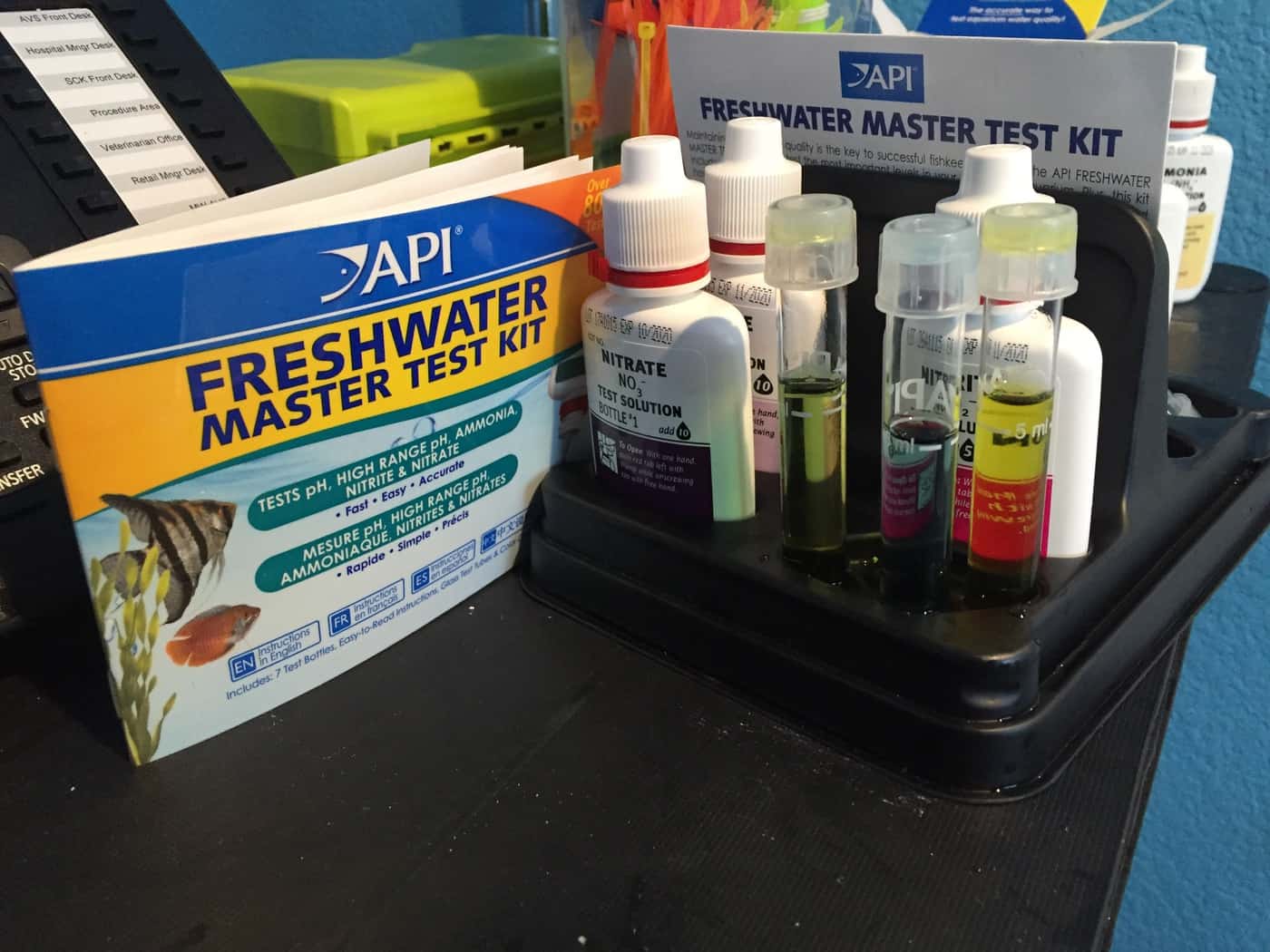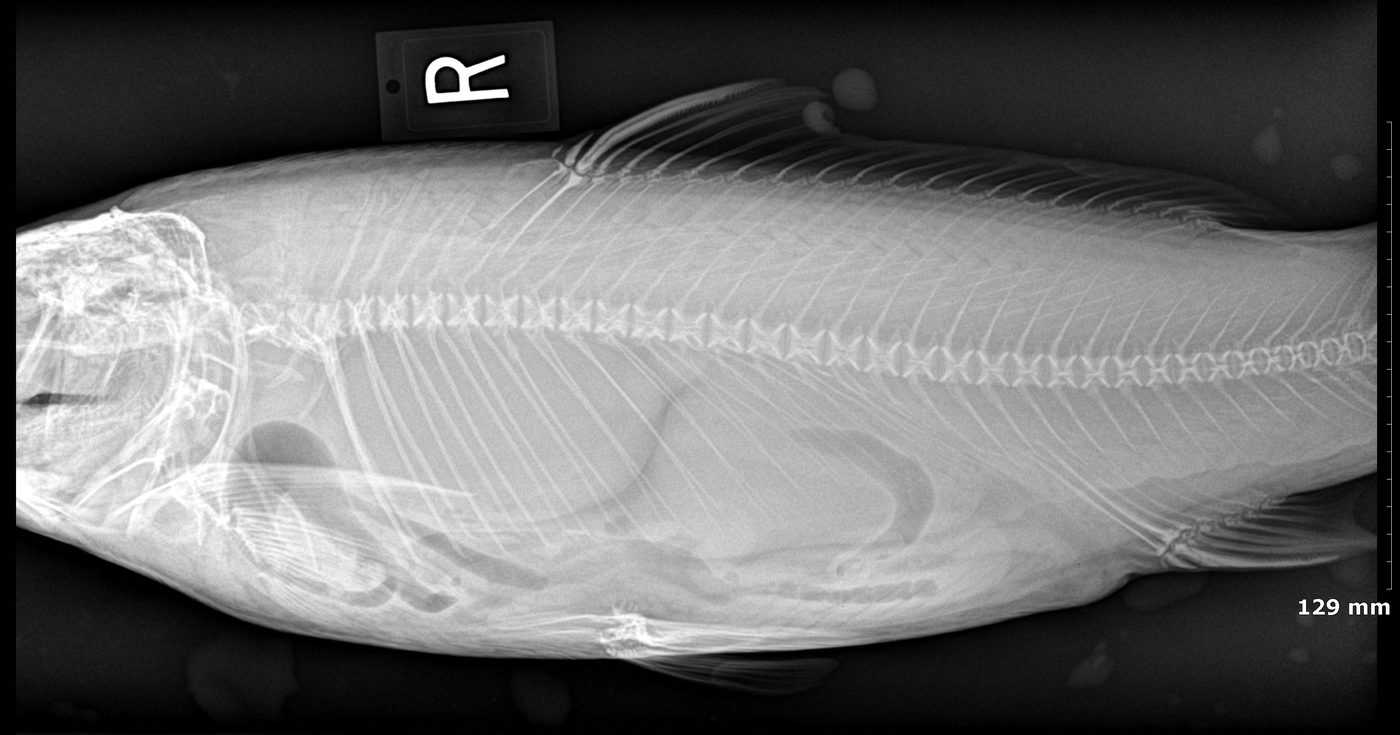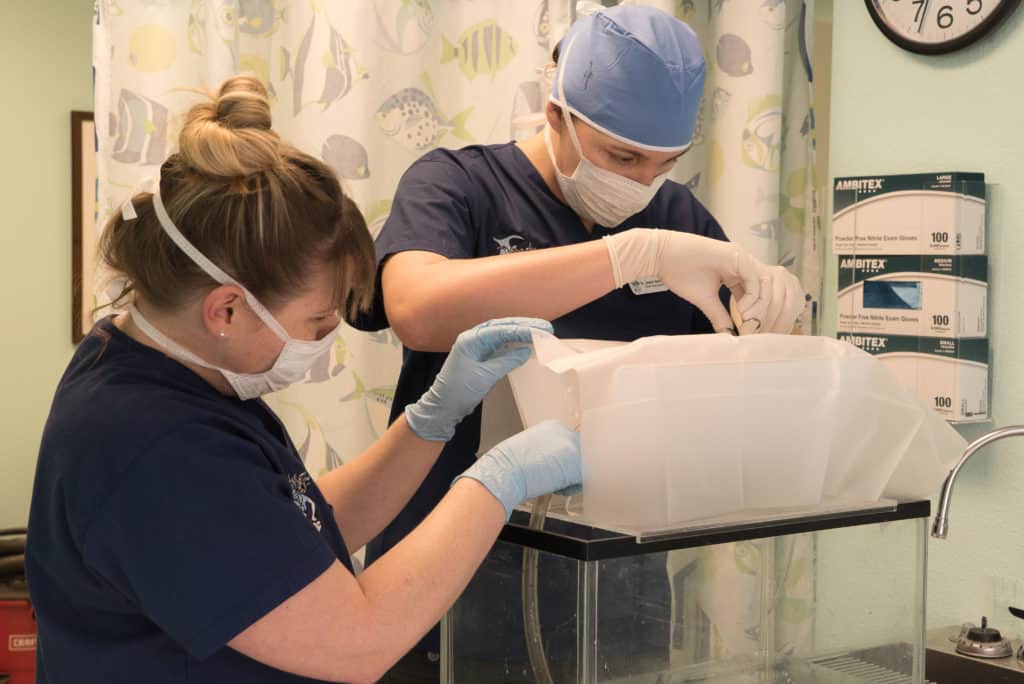How do fish veterinarians decide when it’s time for a fish to go under the knife? Surgery can be very beneficial for fish when it is warranted.
Water Quality Testing

Prior to any surgery, a veterinarian MUST test the water quality. If the water quality is off in any way, recovery after surgery will be hindered. Corrections to water quality must be made prior to any procedure.
Radiographs

In dealing with structures including and next to bones and the swim bladder, radiographs, commonly called “x-rays,” provide great diagnostic info. These are very handy to see if there is any air where it shouldn’t be and if any structures are not in the correct place. For soft tissue, we need…
Ultrasound

This tool is one of the most beneficial to evaluate internal structures in fish. For koi, it is how we are able to see gonadal sarcomas and how extensive they are. A small tumor is much easier to operate on that a large one.
Additional Fish Diagnostics
Bloodwork

Unlike many other pet species, bloodwork is not very useful in many species of pet fish. Reference ranges have been established, but some are too wide, and vary based on water quality and genetics. For surgical procedures, a PCV (packed cell volume) is helpful to understand how much blood a fish loses during a procedure.
If you are concerned about your fish and would like to inquire about a potential surgery, please visit the American Association of Fish Veterinarians or the World Aquatic Veterinary Medical Association.


wow interesting. I did not know they really do surgery to fish. They only do this to big fish right? not with nanos?
It is certainly easier on larger fish, but sometimes fish as small as bettas will need to undergo surgery.
wow I did not know that even nanos can go to surgery. That is amazing.
Here’s a video from one of my colleagues: https://youtu.be/EQunLEYgjKU
thanks watching it now.